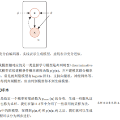The shape of many objects in the built environment is dictated by their relationships to the human body: how will a person interact with this object? Existing data-driven generative models of 3D shapes produce plausible objects but do not reason about the relationship of those objects to the human body. In this paper, we learn body-aware generative models of 3D shapes. Specifically, we train generative models of chairs, an ubiquitous shape category, which can be conditioned on a given body shape or sitting pose. The body-shape-conditioned models produce chairs which will be comfortable for a person with the given body shape; the pose-conditioned models produce chairs which accommodate the given sitting pose. To train these models, we define a "sitting pose matching" metric and a novel "sitting comfort" metric. Calculating these metrics requires an expensive optimization to sit the body into the chair, which is too slow to be used as a loss function for training a generative model. Thus, we train neural networks to efficiently approximate these metrics. We use our approach to train three body-aware generative shape models: a structured part-based generator, a point cloud generator, and an implicit surface generator. In all cases, our approach produces models which adapt their output chair shapes to input human body specifications.
翻译:建筑环境中许多物体的形状是由它们与人体的关系决定的: 一个人如何与该物体互动? 现有的由数据驱动的3D形状的基因模型产生合理对象, 但不说明这些物体与人体的关系。 在本文中, 我们学习3D形状的体觉基因模型。 具体地说, 我们训练椅子的基因模型, 一种无处不在的形状类别, 可以以某种身体形状或坐姿为条件。 身体形状的模型产生一些椅子, 一个人会喜欢这个物体的形状; 外形形状的模型产生一些椅子, 能够容纳给定的坐姿。 为了训练这些模型, 我们定义了一种“ 坐姿姿相匹配” 的模型, 和一个“ 静姿势舒适舒适” 的新颖的3D 模型。 计算这些参数需要昂贵的基因模型才能坐在椅子上, 这个模型太慢, 无法用作一种损失功能来训练一个变形模型。 因此, 我们训练神经网络来有效地接近这些测量一个人的身体形状的形状。 我们用我们的方法来训练三种身体的基因形状模型, 来训练一个结构化的模型, 结构化的形状的模型, 一种结构结构化的形状的模型, 结构化的模型, 结构结构的模型, 结构的形状的模型, 用来去制成型式的模型, 制成的模型, 制成一个部成成的模型, 结构的形状的模型, 的模型, 的形状的形状的形状的模型, 。





